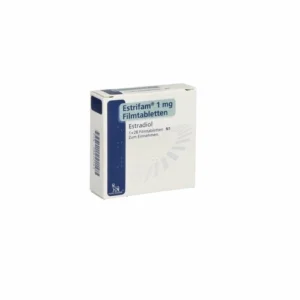Pharmacological action
Pharmacodynamics
Dydrogesterone is a synthetic progestogen with oral bioavailability, which causes the endometrium to transition to the secretory phase in the uterine mucosa prepared by estrogens. It provides protection against the increased risk of developing hyperplasia and/or endometrial cancer induced by estrogens. Dydrogesterone does not have estrogenic, androgenic, anabolic or glucocorticoid activity.
Dydrogesterone does not suppress ovulation, therefore, when taking Duphaston® in women of reproductive age, pregnancy may occur.
In postmenopausal women with a preserved uterus, estrogen replacement therapy increases the risk of endometrial hyperplasia and cancer. The addition of a progestogen prevents this additional risk.
Clinical efficacy and safety
The randomized clinical trials (LOTUS I and LOTUS II) comparing the efficacy, safety, and tolerability of oral dydrogesterone and vaginal micronized progesterone for luteal phase support in in vitro fertilization cycles confirmed the following:
In the study population, the pregnancy rates at 12 weeks of gestation (10 weeks of pregnancy) were 37.6% and 33.1% (LOTUS I) and 36.7% and 34.7% (LOTUS II) for oral dydrogesterone and vaginal micronized progesterone, respectively. The difference in pregnancy rates between the two groups was 4.7 (95% CI, -1.2; 10.6) (LOTUS I) and 2.0 (95% CI, -4.0; 8.0) (LOTUS II).
In the safety population of 1029 patients (LOTUS I) and 1030 patients (LOTUS II) who received at least one dose of the study drug, the incidence of the most common adverse events was comparable in both treatment groups. Due to the nature of the studied patient population/indication, a certain number of abortions/miscarriages are expected in early pregnancy, especially before the 12th week of gestation (10th week of pregnancy), since the expected pregnancy rate at this time point is approximately 35%.
The safety profile observed in both LOTUS studies is as expected, taking into account the well-studied safety profile of dydrogesterone and the patient population/indication.
Indications for Duphaston®
Conditions characterized by progesterone deficiency:
endometriosis;
infertility due to luteal phase insufficiency;
threatened miscarriage;
habitual miscarriage;
premenstrual syndrome;
dysmenorrhea;
irregular menstruation;
secondary amenorrhea;
dysfunctional uterine bleeding;
luteal phase support during assisted reproductive technologies (ART).
Hormone replacement therapy (HRT):
to neutralize the proliferative effect of estrogens on the endometrium as part of HRT in women with disorders caused by natural or surgical menopause with an intact uterus
Contraindications for use
hypersensitivity to dydrogesterone and / or other components of the drug;
diagnosed or suspected malignant hormone-dependent neoplasms caused by sex hormones (including meningioma);
vaginal bleeding of unknown etiology;
liver dysfunction due to acute or chronic liver disease at present or in the anamnesis (until the normalization of liver function tests);
malignant liver tumors, currently or in history;
lactose intolerance, lactase deficiency, glucose-galactose deficiency syndrome;
breastfeeding period;
porphyria, currently or in history;
age under 18 years, due to the lack of data on the efficacy and safety in adolescent girls under 18 years;
spontaneous abortion (miscarriage) or missed miscarriage during luteal phase support as part of assisted reproductive technologies (ART).
Warning: Always consult a doctor before using medications.













